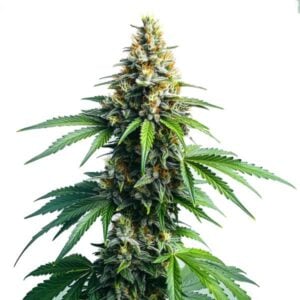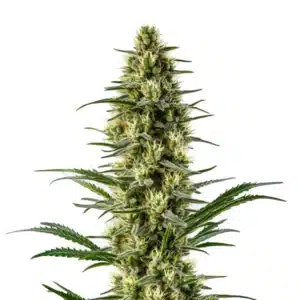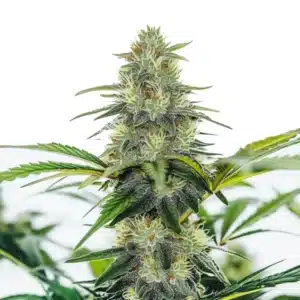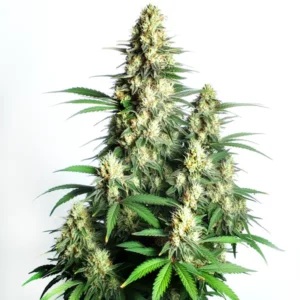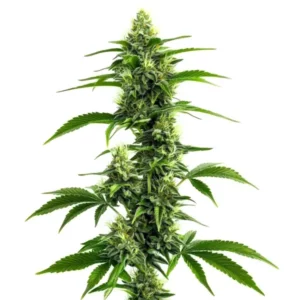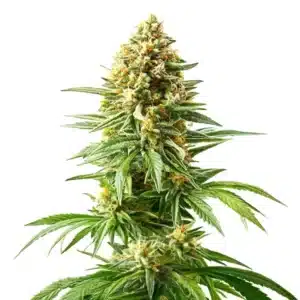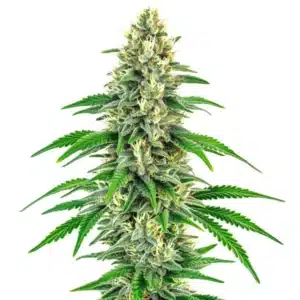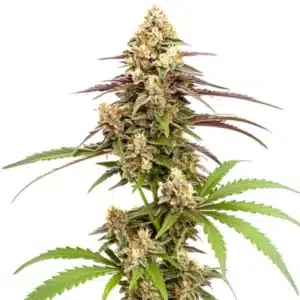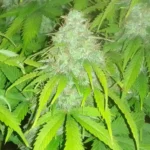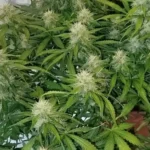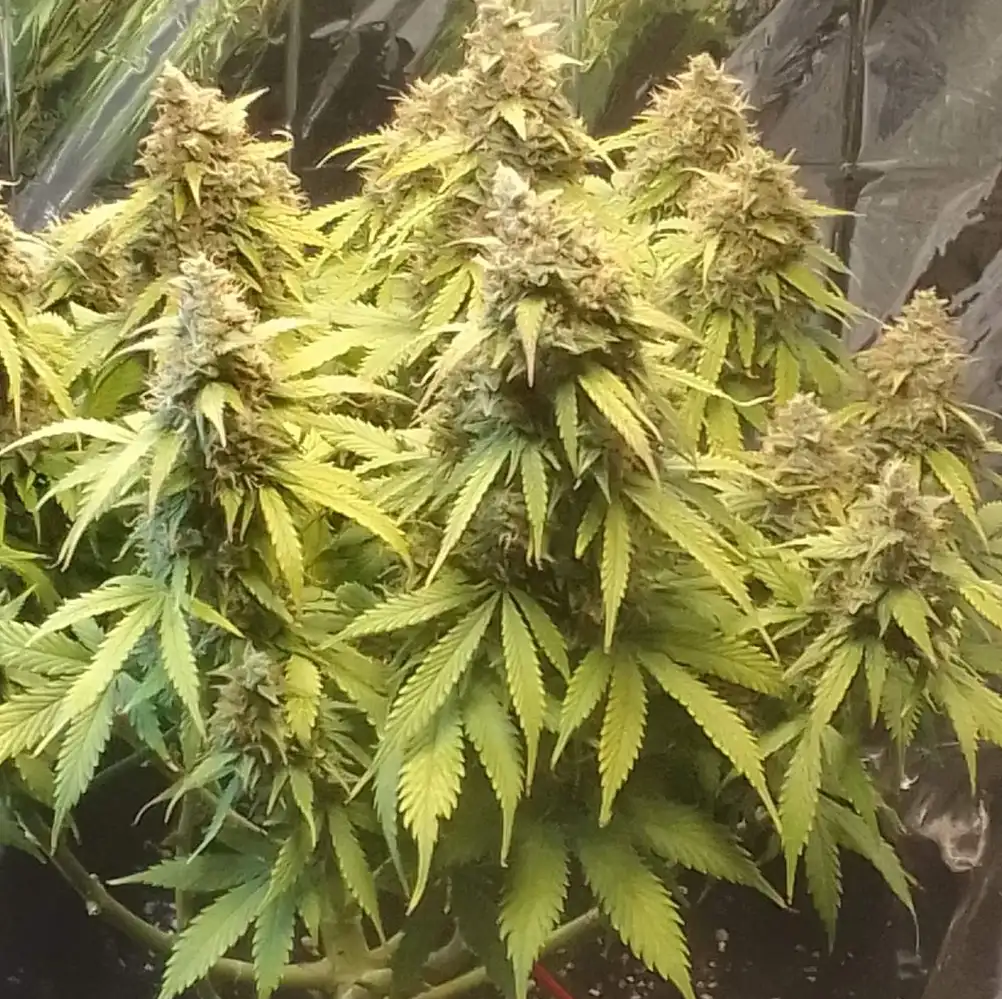
How to Grow Afghan Kush Weed Strain
Afghan Kush Weed Strain Description
The term “Afghan weed plant” usually refers to cannabis varieties native to Afghanistan, prized for their pure indica traits and high resin production. These classic strains are widely used in traditional hash-making and are easily recognized by their compact, bushy appearance, broad foliage, and tightly packed buds. A notable example is Afghanica, a powerful hybrid born from Afghani #1 and Skunk #1, valued for its vigorous growth and heavy bud.
The strain Afghan Kush is a legendary and well-loved strain originating from the Hindu Kush mountain range. Known for its 100% pure indica lineage, Afghan Kush Weed Strain is widely recognized for its powerful effects and resilience, making it a staple for both recreational and medicinal cannabis users. The strain boasts a THC content between 16% and 21%, making it a potent choice for relaxation and stress relief.
Recommended Strains
Afghan Kush
-
THC: 16% - 21%
-
Type of seed: Feminized
-
Phenotype: 10% Sativa / 90% Indica
-
Flavor: Herbal, Pine, Woody
-
Day to flower: 6 - 8 weeks
Agent Orange
-
THC: 21% - 22%
-
Type of seed: Feminized
-
Phenotype: 75% Sativa / 25% Indica
-
Flavor: Fruity
-
Day to flower: 8 - 10 weeks
The dense kush buds of this Afghani strain are covered in a heavy layer of resinous trichomes, giving them a frosty appearance. These compact buds showcase earthy, pine, and woody flavors that captivate the senses, offering a rich and classic indica experience. For those interested in cultivating this strain, Afghani strain grow info reveals that it thrives in both indoor and outdoor environments, producing robust yields with minimal care. The strain is also known for its sedative effects, providing deep body relaxation and mental calm, which makes it popular among medical cannabis patients for addressing insomnia, pain, and muscle spasms.
Promos & Deals
Environmental Requirements for Growing Afghan Kush Weed Strain
This Strain thrives in dry, mountainous climates, which means it can tolerate slightly cooler temperatures than some other strains. For indoor cultivation, keeping the grow room temperature between 68-78°F (20-26°C) is ideal. Afghan Kush Weed Strain is a relatively hardy strain and can withstand moderate fluctuations in temperature, but stable conditions are best for optimal growth.
Humidity levels should be kept low, especially during the flowering phase, to prevent mold and mildew from developing on the dense buds. During the vegetative phase, a humidity level of 40-60% is appropriate, while during flowering, lowering the humidity to 30-40% ensures healthier buds.
Light is a crucial factor in Afghan Kush Weed Seeds cultivation. Indoors, it thrives under powerful LED grow lights or HPS lighting systems. Providing 18-20 hours of light during the vegetative stage and 12 hours during the flowering phase will help the plant reach its full potential. Outdoors, this strain performs well in areas with plenty of sunlight and minimal rain.
Setting Up the Growing Cannabis Space
Indoor Cannabis Cultivation
For indoor cultivation, this strain performs exceptionally well in controlled environments. Growers should consider using grow tents or dedicated grow rooms to maintain the proper conditions. This strain benefits from good airflow, so invest in a quality ventilation system that can handle both air intake and exhaust. A carbon filter is also essential to control the pungent smell during flowering.
This Strain prefers rich, organic soil with excellent drainage. Alternatively, hydroponic setups can also be effective, but maintaining a balanced pH between 6.0-6.5 is key for either method. Make sure to monitor and adjust pH levels regularly to avoid nutrient lockout.
Outdoor Cannabis Cultivation
When growing Afghan Kush Weed Strain outdoors, it’s best to plant in regions with a warm climate that mirrors its natural mountainous environment. Use soil rich in nutrients, and consider using large containers or directly planting into the ground if space allows. Placing the plants in an area with direct sunlight for most of the day is crucial for growth. This Strain is highly resilient to pests and diseases, making it a solid choice for outdoor growers, especially those in dry climates.
Staking may be necessary to support the weight of its heavy buds during flowering. Additionally, training techniques like low-stress training (LST) can be employed to promote an even canopy and maximize light exposure.
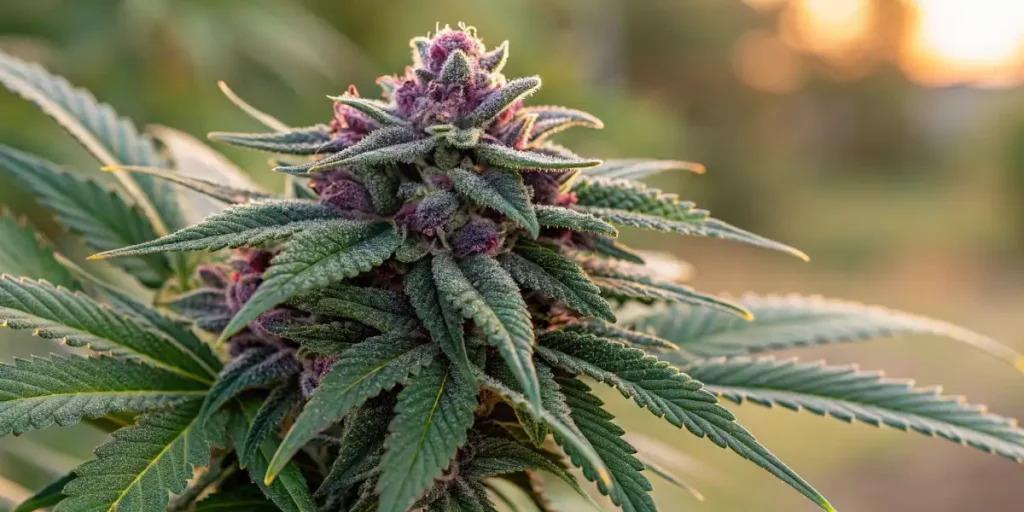
Propagation and Germination of Afghan Kush Weed Strain
For successful propagation, begin with high-quality Afghan Kush Weed Strain seeds from a trusted seed bank. To germinate, soak the seeds in distilled water or wrap them in a damp paper towel for 24-48 hours. Ensure the environment is warm, between 70-85°F (21-29°C), and dark to encourage taproot development.
Once the taproots emerge, gently transfer the seeds to a growing medium such as soil or a hydroponic setup. Keep the environment warm and slightly humid with temperatures around 75-80°F (24-27°C) and humidity between 60-70% to promote healthy growth. In the early seedling stage, provide indirect light to avoid burning the tender young plants.
Vegetative Phase of Afghan Kush Strain
During the vegetative phase, the kush weed plant requires proper lighting, nutrients, and care to promote vigorous growth. Providing 18-20 hours of light daily with strong LED or HPS lights will ensure the plants receive enough energy to develop strong branches and healthy leaves.
Nutrient-wise, this strain benefits from a nitrogen-rich diet during the vegetative phase to encourage robust leaf and stem development. Be sure to follow the nutrient manufacturer’s feeding schedule and adjust based on plant needs. Water your plants when the top layer of soil feels dry to the touch, but avoid overwatering as it can lead to root rot.
Training techniques like topping and low-stress training (LST) are beneficial for controlling the plant’s height and promoting bushier growth. Regular pruning of lower leaves that receive little light can also help improve airflow and prevent mold.
Flowering Phase of Afghan Kush Weed Seeds
The flowering phase of Afghan Kush Weed Strain is when its true indica nature shines through. This strain typically has a flowering time of 7-8 weeks. During this time, the plant produces dense, resinous buds covered in trichomes. It’s essential to reduce humidity to around 30-40% during this phase to avoid issues like bud rot.
In the flowering phase, transition to a nutrient regimen that is higher in phosphorus and potassium, which encourages bud development. Keep a close eye on the plants during this phase to ensure that the environment remains optimal, as the buds can become heavy and may require support. Use stakes or trellises to prevent branches from breaking under the weight of the buds.
Cannabis Fertilization and Nutrition
This Strain thrives when provided with a balanced nutrient schedule that matches its growth phases. During the vegetative phase, the plant needs a nitrogen-rich diet to promote healthy leaves and stems. As the plant transitions to the flowering phase, switch to nutrients that are higher in phosphorus and potassium to support bud growth.
Using supplements like mycorrhizae or beneficial bacteria can help improve nutrient uptake and soil health, especially in organic setups. In the final weeks before harvest, consider flushing the plants with pure water to remove excess nutrients, which can enhance the flavor and smoothness of the final product.
Pest and Disease Control for Afghan Kush Weed Strain
While Afghan Kush Weed Strain is relatively resistant to pests and diseases, it’s still important to implement preventative measures. Regularly inspect your plants for common pests like spider mites or aphids. Early detection is key to preventing infestations.
- Ensure good airflow in the grow space to reduce the risk of mold or mildew.
- Keep the grow area clean and remove any dead leaves or debris that could harbor pests.
- Introduce beneficial insects, like ladybugs, to your grow area to naturally control pest populations.
Harvesting and Curing Afghan Kush Strain
Harvest Afghan Kush Weed Strain when the trichomes turn milky with a few amber heads for a potent effect. Use a magnifying tool to observe the trichomes and ensure optimal maturity. Once ready, cut the branches and trim away large fan leaves, leaving the smaller sugar leaves intact.
Hang the branches upside down in a dark, well-ventilated space to dry for 7-14 days. Keep the environment at 60-70°F (15-21°C) with a humidity level of 50-60%. Once dried, cure the buds in airtight jars, opening them daily for the first week to allow moisture to escape. Proper curing takes about 2-4 weeks and significantly enhances the flavor and smoothness of the final product.
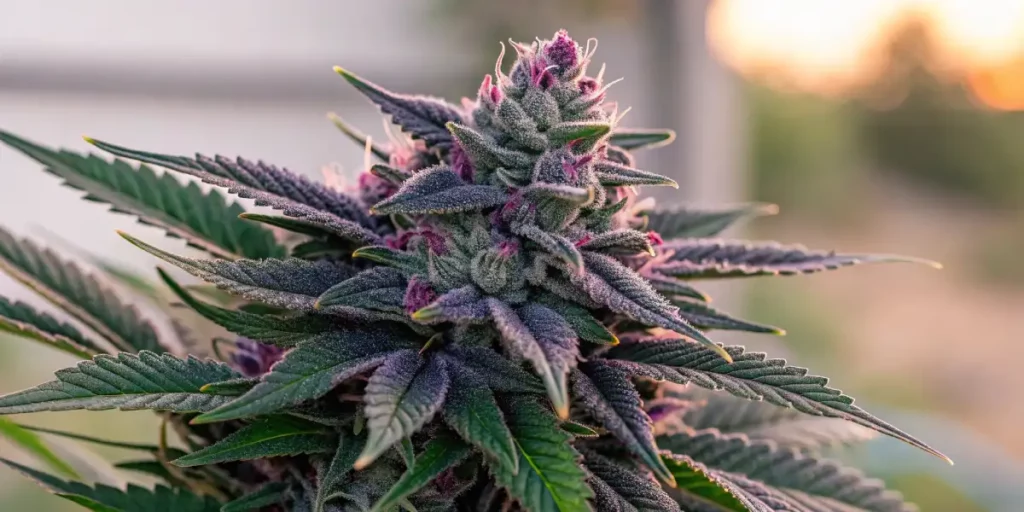
Is Afghan Kush Weed Strain Indica or Sativa?
This Strain is a pure indica strain, known for its deeply relaxing and sedative effects. This strain is ideal for evening use or when seeking relief from pain, insomnia, or anxiety. Its indica genetics make it perfect for those who prefer a full-body experience and want to unwind after a long day.
Advantages
- Resilient to pests and diseases, making it easier to grow.
- Produces dense, resinous buds rich in trichomes.
- Offers potent sedative effects ideal for pain relief and relaxation.
- Short flowering time of 7-8 weeks.
Disadvantages
- Can produce a strong odor during flowering, requiring odor control.
- Yields may be lower compared to some hybrid strains.
- Dense buds are susceptible to mold if humidity is not carefully managed.
Why Buy Afghan Kush Weed Strain
There are several reasons why this strain is an excellent choice for both beginner and experienced growers:
1. Unique Aroma and Flavor: This Strain offers a traditional earthy, pine, and woody flavor profile that is highly regarded by cannabis connoisseurs. This strain’s rich terpenes enhance the overall experience, making it a favorite among those seeking a full-bodied smoke or vapor.
2. Potent Effects: This Strain is renowned for its strong sedative properties. Whether you are seeking relief from chronic pain, insomnia, or just need to unwind after a stressful day, this strain provides powerful body relaxation and calming effects.
3. Medical Benefits: This Strain is frequently used by medical cannabis patients for its ability to alleviate pain, reduce stress, and promote sleep. Its potent indica effects make it a popular choice for treating conditions like arthritis, muscle spasms, and anxiety.
4. Easy to Grow: This Strain is known for its resilience and ability to thrive in various environments. Whether grown indoors or outdoors, this strain is relatively easy to cultivate, making it an excellent option for beginner growers looking to produce high-quality cannabis.
5. Short Flowering Time: With a flowering time of just 7-8 weeks, Afghan Kush Weed Strain delivers potent buds in a relatively short period, allowing growers to harvest sooner than many other strains.
Problems in Cultivating Afghan Kush Weed Strain
Although Afghan Kush Weed Strain is a robust and resilient strain, growers may still encounter some challenges during the cultivation process. Here are a few potential issues:
1. Mold and Mildew: Due to the dense nature of this strain buds, there is a risk of mold or mildew, especially if humidity levels are not carefully managed during the flowering phase. It’s essential to maintain proper ventilation and reduce humidity to 30-40% during flowering.
2. Nutrient Imbalances: This Strain responds well to a balanced nutrient schedule, but overfeeding can lead to nutrient burn, while underfeeding can result in deficiencies. Monitor your plants closely for signs of yellowing leaves or other nutrient-related issues.
3. Strong Odor: This Strain produces a strong, earthy aroma during flowering, which can be challenging to control in indoor grow setups. Using a carbon filter and maintaining good ventilation will help reduce the smell if discretion is necessary.
4. Branch Support: As Afghan Kush Weed Strain produces heavy, resinous buds, the branches may need support to prevent breakage. Using stakes or trellises will help ensure the plant can bear the weight of its dense flowers without damage.
Similar Strains to Afghan Kush Weed Seeds
- Hindu Kush: A similar 100% indica strain that originates from the same region as Afghan Kush Weed Strain, known for its relaxing and sedative effects.
- Black Domina: Another potent indica strain with similar medicinal benefits, offering strong pain relief and sedative properties.
- OG Kush: While not a pure indica, OG Kush shares the earthy, piney flavors and potent effects that make it a popular strain for those seeking relaxation and stress relief.
Tips for Professional Growers
For professional growers looking to maximize their Afghan Kush Weed Strain harvest, here are a few advanced tips:
- Optimize Light Intensity: Providing this strain with strong LED or HPS lights will ensure it develops dense buds with high THC levels. Pay attention to the light distance to prevent light burn but still allow for optimal photosynthesis.
- Maintain pH Levels: This Strain is sensitive to nutrient uptake, so maintaining a soil pH between 6.0 and 6.5 is essential for healthy growth. Regularly monitor pH levels to prevent nutrient lockout.
- Implement Training Techniques: Techniques such as low-stress training (LST) or topping can help improve bud production by promoting better light penetration and airflow.
- Proper Ventilation: Dense buds can trap moisture, so it’s crucial to ensure proper airflow within the grow space. This will help reduce the risk of mold and mildew during the flowering phase.
- Harvest at the Right Time: Monitor trichome development to determine the optimal harvest window. This Strain produces its best effects when harvested at peak ripeness, with mostly cloudy trichomes and some amber ones for more sedative effects.
FAQs
What is the THC content of Afghan Kush Weed Strain?
This Strain typically has a THC content ranging between 16% and 21%, providing potent effects for both recreational and medicinal users.
How long does Afghan Kush Weed Strain take to flower?
This Strain has a relatively short flowering time of 7-8 weeks, making it an ideal choice for growers seeking a quicker turnaround.
Is Afghan Kush Weed Strain suitable for beginners?
Yes, Afghan Kush Weed Strain is considered beginner-friendly due to its resilience and ease of growth. It can thrive both indoors and outdoors with minimal complications.
What flavors does Afghan Kush Weed Strain offer?
This Strainprovides an earthy, pine, and woody flavor profile, making it a classic indica strain loved by many cannabis enthusiasts.
What are the medicinal benefits of Afghan Kush Weed Strain?
This Strain is often used for pain relief, stress reduction, and to promote sleep, making it a popular strain among medical cannabis users.

